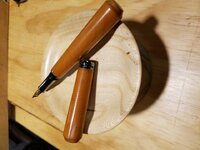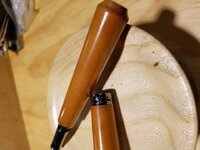pshrynk
Member
My wife owns a local art gallery, where she wants me to sell pens. She also belongs to the local Chamber. One of the things they do is promote the local parks, where there is an historic tree walk that one of the city arborists takes people on several times a month in the summer. She "volunteered" me to make pens out of wood from trees (not necessarily the exact trees) that are on the walk. I looked at them and can't say that I have seen most of these in any list available. Does anyone know if these woods are 1) any good for pens, and 2) available? (I may need to do some midnight requisitioning if everyone really insists.) 
Cottonwood
Ginkgo
Douglas Fir
White Pine
Norway Pine
European Larch (The Larch... :biggrin: )
Burr Oak
Crabapple
Kentucky Coffeetree
Any help would be greatly appreciated. I'm not entirely sure that coniferous wood would be a grand idea, given the softness...
Cottonwood
Ginkgo
Douglas Fir
White Pine
Norway Pine
European Larch (The Larch... :biggrin: )
Burr Oak
Crabapple
Kentucky Coffeetree
Any help would be greatly appreciated. I'm not entirely sure that coniferous wood would be a grand idea, given the softness...


